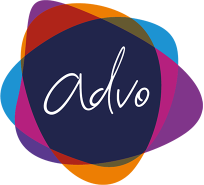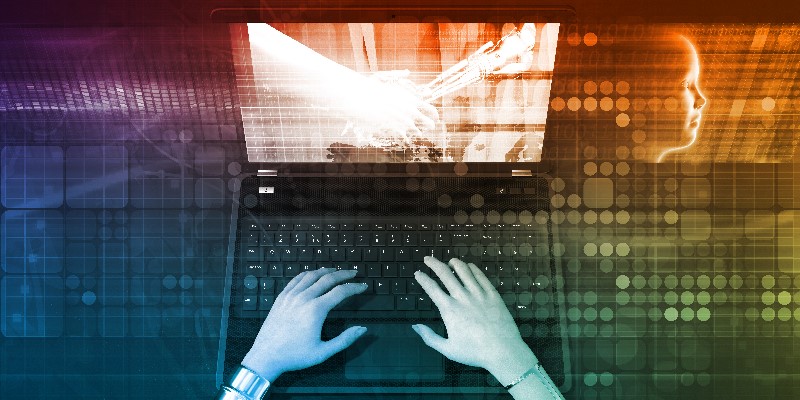It’s no secret that the landscape of work has changed dramatically over recent years. And although that the pandemic is now relatively past, its subsequent effects still firmly reside. Foremost, the seismic shift that has made remote working the new norm.
Human resource (HR) leaders are responsible for many of the fundamentals of a business’s or company’s system including employee benefits, payroll, and employee engagement, to name a few. Naturally, any changes relating to working life make it necessary for HR departments to adapt in order to remain both compliant with laws and regulations, as well as relevant and effective.
If HR professionals are to be successful in this way, then they are forced to capitalise on the current and growing trends within the industry. Despite HR, by definition, concerning people, i.e., the workforce, this doesn’t go to say that there isn’t room for technological involvement. After all, the world grows ever increasingly informed by digital aspects each day, even by those which may appear counterintuitive.
It’s for this reason that we’ve compiled our list of the top HR technology trends to be aware of in 2022, and what to look out for in 2023. We’ll cover, among other developments, the latest innovations in automation and AI and how implementing these can help towards talent acquisition and management.
What is HR Technology?
HR technology is a broad term, it comprises both the range of software and hardware that HR companies use to support the role that they play within an organisation. This encompasses a variety of functions in a business, referring notably to task automation for compensation, payroll, workforce analytics, and acquiring and managing talent. Enhancements in these areas, in addition to the consequent insights that they bring, are integral to strategically improving performance in HR.
Keeping on top of HR technology trends is a highly relevant practice today, considering the competitive level at which the current labour market sits. Attitudes and demands from employers have changed as a new generation of workers is being ushered in, and this means that HR itself must likewise change too.
1. Hybrid Working and Flexibility
As briefly mentioned, it’s evident that the trend of remote working opportunities which the pandemic necessitated isn’t going away any time soon. In fact, offering shift patterns that allow employees to spend time working off-site is likely to make jobs wholly more attractive, even if the role isn’t entirely remote-based. In light of this approach, the once usual 9-5 schedule appears relatively draconian, and potential new hires are fully aware of this. As more and more companies and businesses implement hybridity and flexibility within their job offerings, the harder you’ll find it to attract and retain talent if you don’t keep up.
The recent years clearly illustrated, for a number of organisations, where there was a need for further investment in technological services. For instance, the inability to conduct in-person interviews prevented a lot of companies and businesses from growing. Now it is the case, almost exclusively, that interviews, new-hire training, and onboarding processes are carried out by HR professionals virtually.
The upshot of this are hybrid working environments where communications and operations can be carried out remotely, removing any physical restraints. Heightening workers’ remote capabilities may involve introducing online portals and cloud-based systems, but the direct resources that are required for such technology will ultimately benefit both employees and their employers. It’s important to understand and place HR technology trends in this context.
2. Focus on Employee Wellbeing
Another ever-growing trend is organisations prioritising a focus on the wellbeing/wellness of their employees’ overall physical and mental health. This topic saw a large growth in interest in the public consciousness over the last decade, and similarly to remote working, came to the foreground in the midst of the Covid-19 pandemic. The implications of work-related stress, the lack of a positive work-life balance, and the modern-day sedentary lifestyle are not easily dismissed, the impacts manifest as burnout and even contributors to depression.
The gravity of this subject is what’s leading today’s HR companies and departments to implementing programmes and applications that afford a degree of healthcare and therapy. That is, tools that promote behaviours which are seen to combat overwhelming levels of anxiety and stress. It’s vital for HR professionals to allocate the necessary resources towards detecting and alleviating common distresses resulting from employment and then targeting them off the back of this information. This is a key factor for retaining talent and also invigorating workforce engagement.
3. AI Analytics and Recruitment
It wasn’t so long ago that artificial intelligence and machine learning were in their infancy, now they are very useful tools in various industries, including HR. Data is a cornerstone element of HR functions, as is how it’s handled and responded to. Employee-related data can be garnered from surveys and employee feedback tools which measure their engagement, wellbeing, and overall satisfaction with employment. Augmented analytics platforms incorporate AI in order to efficiently analyse the data that is returned from such surveys, subsequently producing digestible insights into workforce measurements.
Alongside this, the trends and patterns that AI detects can also be used when searching for and recruiting talent that is suitable. AI capabilities regarding this refer to having machines ask questions and then recommending the candidates that it deems suitable, based on the data that it has stored. The crux is that AI operations are automated, therefore reducing the amount of time that would usually be dedicated to tasks like these, instead allowing for time-allocation elsewhere.
4. Automation
Technology for automation in HR doesn’t just relate to AI, as we have just glossed over, it likewise applies to other factors. Automation can be used by HR companies and departments to carry out administration, communication, and data entry. Work in these areas typically demands a considerable degree of careful attention which can prove to be quite time-consuming.
Having all of these responsibilities automated by a system obviously means removing the need to spend energy on such duties. Moreover, it also eliminates the risk of human error occurring, for instance, working long hours with figures can be mentally draining and lead to wrong data being inputted, machines do not have this problem. And so, this will not only result in an increase in HR professionals’ productivity, but also that of systemic efficiency and accuracy.
5. Blockchain Integration
It might be a surprise to know that blockchain technology is establishing itself in the HR world, notably because it made a name for itself within the cryptocurrency infrastructure. Namely, by providing financial transaction safeguarding without needing banks or middlemen to play a role. And now, as it becomes more accessible and mainstream, there is the opportunity to integrate it within HR operations.
As things become increasingly more digitised, data security is a plain concern for employees. Blockchain provides a high-end level of encryption for networks on which employers and employees share sensitive work-related information. Specifically, it affords potential workers the ability to securely send educational and other personal data through a channel for companies and businesses to then verify their validity.
Ultimately, this makes the process of talent recruitment, data handling, and financial transactions solidly safe and streamlined for employers as well as for both current and prospective employees. The benefits for HR managers are immediate here because blockchain registries bring with them an inherent level of trust, given that they prohibit unauthorised access to confidential data.
6. Transparency and Compliance with D&I, DEI, and DEI&B
All throughout the recruitment stage and employment term organisations should be comprehensively transparent in their approaches. The beginnings of this initiative were marked by the term ‘diversity and inclusion’ (D&I), signalling an obligation to value diverse teams and an inclusive workplace. This means making decisions based on data, as opposed to biassed profiling.
Since the initial movement, however, the term has expanded to ‘diversity, equality, and inclusion’ (DEI), as well as ‘diversity, equality, inclusion, and belonging’ (DEI&B). These terms are salient as they represent the drive towards working environments that intrinsically offer equal opportunities, alongside the following recognition for individual skill and task fulfilment. Jobs should not just be monetarily rewarding, they should also provide a sense of purpose and accomplishment.
Remote roles have broken down a lot of the barriers that once held companies and businesses back from having a diverse workforce. It is up to HR professionals to proactively foster an atmosphere that is underpinned by fundamentally humanitarian core values. Software now exists which makes it easy for analytics teams to be fair, and so progress by reducing bias and helping to distribute roles to minority candidates.
7. All-in-One HR Software
Software, whether online, cloud-based, or in the form of an application that serves to provide employers and employees alike with all the work-related capabilities that they require is becoming an industry standard. Having user-friendly technology for carrying out HR responsibilities while managing payroll and employee benefits in real-time generally makes things easier. It can help by informing business decisions, smoothening procedures, bridging communication gaps, and making it easy for your employees to give and receive pertinent documentation. The expansive benefits to be had essentially function to improve your brand as an employer.
Our advo-one platform is an integrated business management system software package that makes all of this possible for you. Including resources that are readily available at any time such as payslips, handbooks, an absence planner, employee perks and benefits, in addition to a host of wellbeing features. The technology we use is designed to put people first, ensuring that you can maintain and manage a happy and productive team all via one secure login.
What 2023 Will Bring for HR
It’s clear that these above trends will continue to grow and advance for years to come, but what are the direct inferences we can make for 2023? Well, as the need to assure employee engagement and wellbeing rises, we may see a rise in employee independence. Namely, as employees are able to now view work as a means of personal self-development, this consequent empowerment will necessitate their capacity to influence business processes. If employees begin to take on more responsibility, and so have a distinctly substantial impact, then it will mark a fundamental shift in the way that organisations, and the systems therein, function and operate.
Likewise, it’s probable that the responsibilities of HR managers will change. As certain processes become wholly digitised and automated, this gives HR departments leave to focus on other areas. Especially relevant in this context, it’s vital that the ‘human’ aspect of HR isn’t neglected. Just because some duties are to be lifted, this doesn’t go to say that it opens the opportunity of lessening workload. Rather, it provides HR professionals with the potential to make more time for their people-facing tasks. To combat heightening turnover rates, new approaches to serious concerns like your workforce’s physical, mental, and financial health needs must be adopted and constantly developed. 2023 will pose novel obstacles to keeping employees healthy, happy, and productive, and it’s down to HR to overcome them.
Thanks for taking the time to read this article, we hope it has helped to enlighten you on the HR technology trends that 2022 has brought and given you an insight into how things may look in 2023. For more related information head on over to our news section which we regularly update. If you’ve got a decided or growing interest in using our services then be sure to get your free quote from us today, or simply contact us for further details. We look forward to hearing from, and hopefully working with you!


